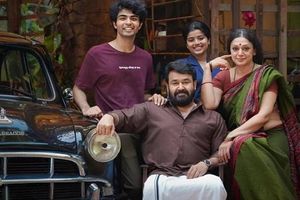Chaos Group has made significant strides in the world of architectural visualization with the recent updates to its software, Chaos Corona 12 and Chaos Anima 6. These updates not only enhance the user experience but also introduce groundbreaking features that promise to transform the way professionals approach their projects.
Released as a second update for Chaos Corona 12, which debuted last year, this latest iteration focuses on technical improvements while laying the groundwork for future releases, particularly Corona 13. One of the most exciting features introduced is direct access to over 3,100 ultra-realistic scanned materials, all seamlessly integrated into the Cosmos library. This means users can now drag and drop these materials directly into their scenes without the hassle of switching platforms or performing manual imports.
In addition to the new materials, Chaos Corona 12 Update 2 also introduces a new Per-Camera Global Volume override feature, currently available in Corona for 3ds Max and soon to be released for Corona for Cinema 4D. This allows users to set unique volume settings for each camera, offering greater creative control over fog, haze, and other atmospheric effects, enabling distinct atmospheres from various angles.
Furthermore, the update enhances depth of field with the new DOF Highlight Solver, which makes reflected and refracted highlights behave more naturally. This improvement is set to enhance the consistency and visual appeal of scenes, making them more immersive for viewers. Another technical enhancement is the Differential Ray Filtering feature, which improves texture filtering by reducing blurring in reflections, refractions, and directly visible textures, particularly in fisheye and spherical projection cameras. This feature is enabled by default in new scenes, while existing scenes will prompt users to switch to the new filtering option.
Chaos Group has also integrated a feature that allows users to create panorama virtual tours with automatic hotspots, eliminating the need for third-party applications. Users can customize floor plans, transitions, and details directly from the Virtual Frame Buffer (VFB), making it easier to impress clients and collaborators.
Not to be overlooked, the update also highlights 18 new Look-Up Tables (LUTs) created by Iraban Dutta, expanding the creative possibilities for users looking to enhance their visual storytelling.
In a parallel development, Chaos has introduced another industry first with Chaos Anima 6, which now includes a traffic simulation system tailored for architectural visualization (ArchViz). This innovative feature allows visualization professionals to simulate realistic automotive traffic in their designs, utilizing a library of ready-to-use vehicles. Diego Gadler, creator of Chaos Anima, remarked, "Even though traffic is such an integral part of our daily lives, archviz teams have never had an easy way to depict it. Now, they can just point, click, and drag out routes in seconds, enabling realistic car and pedestrian traffic that would have been time-prohibitive to do before."
With Chaos Anima, visualization professionals can populate their scenes rapidly with hundreds of animated vehicles that behave realistically, adhering to standard traffic rules and interacting believably with pedestrians. This new capability is particularly useful for urban projects where traffic flow is crucial to the overall design.
Francesco Testa, Co-founder at Prompt Studio, expressed enthusiasm for the new version, stating, "We use Anima in all of our animation projects, and we’re very excited about what the new version brings. If the new vehicle simulation system is anything like their people simulation tool, it’s going to be a game changer for animation production in the archviz industry — making Anima even more essential to our workflow."
Additionally, Anima 6 introduces a new graphics engine designed to dramatically improve performance on large-scale simulations. This enhancement allows for more simultaneous characters and a higher volume of vehicles in real-time simulations. The Anima character library has also expanded, now exceeding 4,000 assets, with over 200 new models added in recent months. This includes a diverse range of ethnicities, professions, and clothing options, allowing ArchViz professionals to add extremely realistic moving or stationary people to their animated scenes. Notably, the new version allows for animated facial features, including talking and laughing, and even enables people to run, not just walk.
Chaos Anima 6 is compatible with leading digital content creation (DCC) software systems, including 3ds Max, Maya, Cinema 4D, and Unreal Engine, although it currently only supports the Windows versions of these applications.
As Chaos Group continues to innovate, the architectural visualization industry stands to benefit greatly from these advancements. With tools that enhance realism and efficiency, professionals can create more compelling and lifelike representations of their designs. As the lines between digital and physical realities blur, these updates are not just enhancements; they represent a significant leap forward in how architectural projects are visualized and experienced.




